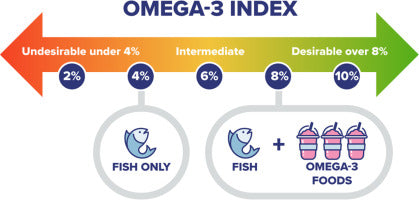Managing diabetes is a lifelong commitment that involves monitoring blood sugar levels, maintaining a healthy lifestyle, and making dietary adjustments. One of the most effective strategies for keeping blood sugar levels stable is adhering to a low-glycemic diet. In this blog, we will delve into the science behind low glycemic index (GI) diets, their role in diabetes management, and how they can enhance blood sugar control for those living with diabetes.
Understanding Glycemic Index (GI)
The glycemic index (GI) ranks foods based on how quickly they raise blood sugar levels. Foods are assigned a GI value from 0 to 100, with higher numbers indicating that the food is rapidly digested and absorbed, leading to a spike in blood sugar levels. Conversely, foods with a low GI (55 or below) are digested more slowly, gradually increasing blood sugar.
- High GI Foods: 70 and above (e.g., white bread, sugary drinks)
- Medium GI Foods: 56 to 69 (e.g., whole wheat products, certain fruits)
- Low GI Foods: 55 and below (e.g., legumes, non-starchy vegetables)
For individuals with diabetes, focusing on low-GI foods can help manage blood sugar levels and reduce the risk of complications like cardiovascular disease, nerve damage, and kidney problems.
The Impact of High Glycemic Foods on Diabetes
When people with diabetes consume high-GI foods, their blood sugar levels spike rapidly. This can lead to hyperglycemia, which, if left unchecked, can result in long-term health issues. Frequent blood sugar spikes put additional stress on the pancreas, which must produce more insulin to manage glucose levels. Over time, this can wear down the pancreas, especially in individuals with type 2 diabetes, potentially leading to insulin resistance.
High glycemic foods can also:
- Increase cravings, leading to overeating
- Cause fluctuations in energy levels
- Contribute to weight gain, a risk factor for diabetes complications
Managing these factors through a low-GI diet can significantly improve blood sugar control and overall health.
The Benefits of a Low Glycemic Diet in Diabetes Management
- Improved Blood Sugar Control Foods with a low glycemic index are absorbed more slowly, which helps prevent the sharp spikes in blood sugar levels. This makes it easier for the body to manage glucose levels, particularly after meals. Acarbose, a medication often prescribed for diabetes, works similarly by slowing carbohydrate digestion and absorption, reinforcing the benefits of a low-GI diet.
- Reduced Insulin Resistance Low GI foods contribute to better insulin sensitivity, which is essential for people with type 2 diabetes. When the body becomes more sensitive to insulin, it requires less of it to manage blood sugar levels. A diet focused on low-GI foods can gradually reduce insulin resistance and make diabetes easier to manage.
- Weight Management Maintaining a healthy weight is crucial for diabetes management. Low-GI foods tend to be more filling, helping to control hunger and reduce calorie intake. This can be particularly beneficial for individuals with type 2 diabetes, where weight management is often a key factor in controlling blood sugar levels.
- Reduced Risk of Cardiovascular Disease Diabetes increases the risk of heart disease, but following a low-GI diet can help mitigate this risk. Low-GI foods often contain more fiber, which helps lower cholesterol levels and supports heart health. By improving cholesterol and blood sugar levels, a low glycemic diet plays a role in reducing cardiovascular complications in diabetes.
Foods to Include in a Low Glycemic Diet
A low-GI diet focuses on whole, unprocessed foods that are digested slowly. Below are some examples of low-GI foods that can support blood sugar management:
- Legumes: Lentils, chickpeas, black beans
- Non-starchy Vegetables: Broccoli, spinach, cauliflower
- Whole Grains: Quinoa, barley, oats
- Fruits: Apples, berries, oranges
- Dairy: Plain yogurt, skim milk
- Nuts and Seeds: Almonds, chia seeds, flaxseeds
Additionally, pairing high-GI foods with low-GI options can help lower the overall glycemic impact of a meal. For instance, adding fiber-rich vegetables to a portion of rice can reduce the speed at which the rice is digested.
Practical Tips for Following a Low Glycemic Diet
- Prioritize Whole Foods Focus on whole grains, vegetables, fruits, legumes, and lean proteins. Processed foods often contain added sugars or refined grains that increase their GI, so minimizing them can help improve blood sugar control.
- Choose the Right Carbohydrates: Not all carbs are created equal. Opt for complex carbohydrates found in whole grains and legumes, which are digested more slowly than simple sugars.
- Add Fiber to Every Meal Fiber slows the digestion and absorption of carbohydrates, lowering the glycemic index of the entire meal. Vegetables, fruits, whole grains, and legumes are excellent sources of dietary fiber.
- Be Mindful of Portion Sizes Even low-GI foods can affect blood sugar levels if consumed in large quantities. Monitor portion sizes, especially for foods like grains and starchy vegetables, to ensure they don’t contribute to blood sugar spikes.
- Include Protein and Healthy Fats Adding lean protein (e.g., chicken, fish, tofu) and healthy fats (e.g., olive oil, avocado) to your meals can further slow down the absorption of carbohydrates, helping to manage blood sugar levels.
How Low GI Diets Compare to Other Dietary Approaches
Several dietary approaches to managing diabetes exist, including low-carb, Mediterranean, and plant-based diets. While each has its benefits, the low glycemic index diet is uniquely focused on controlling the speed of carbohydrate digestion, making it particularly effective for blood sugar management. Unlike low-carb diets, which restrict overall carbohydrate intake, a low-GI diet allows for more flexibility by emphasizing carbs' quality rather than quantity.
Strategies for Maintaining a Healthy Gut on a Low Glycemic Diet
- Incorporate fiber-rich foods: Choose foods high in soluble fiber, like legumes, oats, and flaxseeds.
- Probiotic and prebiotic intake: Add foods such as yogurt, sauerkraut, and bananas to your diet.
- Varied vegetable consumption: Eat a rainbow of vegetables to provide a range of nutrients for gut bacteria.
- Stay hydrated: Drink plenty of water to help digestion and nutrient absorption.
- Limit artificial sweeteners: These can disrupt gut microbiome balance. Opt for natural sweeteners.
- Regular eating schedule: Consuming meals at consistent times aids in maintaining gut health.
- Avoid processed foods: They often have high glycemic indexes and can harm gut bacteria.
A low-glycemic diet is a powerful tool for managing diabetes and controlling blood sugar levels. By prioritizing slow-digesting, fiber-rich foods, individuals with diabetes can improve their insulin sensitivity, manage their weight, and reduce their risk of complications. While no single diet is a cure for diabetes, adopting a low-GI approach can significantly improve the quality of life for those living with the condition.
References:
- Jenkins, D.J.A., et al. (2002). Glycemic index: Overview of implications in health and disease. The American Journal of Clinical Nutrition, 76(1), 266S-273S. https://www.sciencedirect.com/science/article/pii/S0002916523058276
- Ludwig, D. S. (2002). The glycemic index: Physiological mechanisms relating to obesity, diabetes, and cardiovascular disease. JAMA, 287(18), 2414-2423. https://jamanetwork.com/journals/jama/article-abstract/194907
- Thomas, D. E., & Elliott, E. J. (2010). The use of the low-glycemic index diet in diabetes control. The British Journal of Nutrition, 104(5), 797-802. https://www.cambridge.org/core/journals/british-journal-of-nutrition/article/use-of-lowglycaemic-index-diets-in-diabetes-control/5866BB1A5E271DA544EEEAA23B84B3CD



